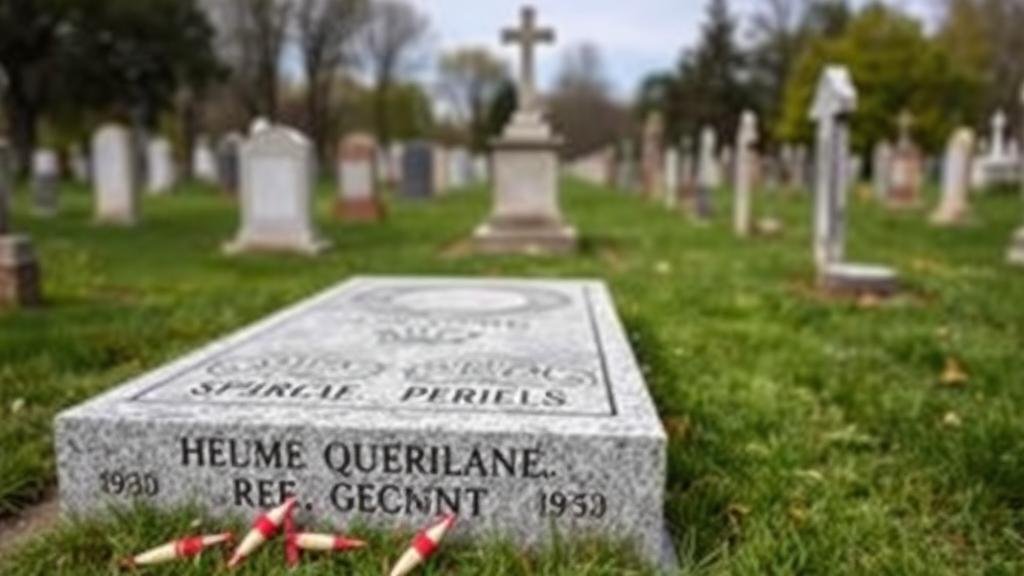Exploring Forgotten Cemetery Maps for Relics of Funeral Practices
Exploring Forgotten Cemetery Maps for Relics of Funeral Practices
The intersection of geography, history, and anthropology often manifests in the forgotten cemetery maps scattered across various regions. These maps serve as more than mere geographic tools; they encapsulate the cultural practices surrounding death and burial within specific communities. This paper investigates the significance of these forgotten maps in understanding historical funeral practices, highlighting the evolution of societal attitudes towards death, and examining the ways in which cartographic depictions can reveal and preserve these rituals.
The Historical Context of Cemetery Mapping
Cemeteries are significant both as historical records and as cultural artifacts. practice of mapping burial grounds can be traced back to ancient civilizations, where burial sites were marked for both practical and spiritual reasons. For example, the ancient Egyptians meticulously documented burial sites such as the Valley of the Kings, often incorporating these maps into religious texts.
The Emergence of Modern Cemetery Mapping
In the 19th century, particularly in the United States and Europe, the rise of modern cemetery mapping was driven by urbanization and the need for organized burial practices. Mapping became essential to manage space effectively amid increasing populations. establishment of rural cemeteries, such as Mount Auburn Cemetery in Massachusetts in 1831, emphasized park-like landscapes over traditional graveyards and was accompanied by detailed maps illustrating burial plots and pathways.
- Mount Auburn Cemetery: Established in 1831, it represents a shift toward landscaped cemeteries.
- Green-Wood Cemetery: Founded in 1838 in Brooklyn, New York, it became a model for rural cemeteries with detailed cartography.
Methodologies for Analyzing Forgotten Cemetery Maps
Investigating forgotten cemetery maps requires a multidisciplinary approach, integrating historical analysis, geographic information systems (GIS), and anthropology. Researchers examine these maps not only to locate graves but also to interpret the practices surrounding death.
Cartographic Analysis Techniques
Advanced GIS technology allows researchers to overlay historical maps with modern geographic data. By comparing these layers, scholars can identify changes in burial practices and cemetery layouts over time. For example, a study focusing on the buried history of Black cemeteries in the southern United States demonstrates how maps reveal the ways in which these communities historically adapted their funerary practices in response to broader societal changes.
Maps often illustrate the cultural significance of burial rituals through their layout and inscriptions. The placement of graves, types of memorials, and accompanying symbols can inform researchers about the spiritual beliefs and societal values of the time.
Diverse cultural backgrounds lead to varied funeral practices, distinctly shaping cemetery designs. For example, in the Jewish tradition, graves are oriented eastward, a practice illustrated through cemetery maps in Jewish burial sites worldwide. Similarly, Native American burial practices may feature circular arrangements of graves, imbuing the space with spiritual significance housed within the maps depiction.
- Jewish Burial Sites: Notable maps show the eastward orientation of burials, signifying the resurrection of the dead.
- Native American Site Layouts: Circular burial patterns are often highlighted in cemetery planning documents.
The Role of Community and Memory in Cemetery Mapping
Cemeteries are communal spaces that serve as repositories of collective memory. The community plays a vital role in the preservation and interpretation of cemetery maps. The mapping of abandoned or forgotten gravesites can lead to community-driven restoration projects aimed at honoring those interred.
Case studies such as the restoration efforts at the historic African American cemetery in Oakwood, Texas, demonstrate how community mapping projects can revitalize interest in long-forgotten sites. Local volunteers collaborated with historians and archivists to create updated maps highlighting buried relics of historical significance.
Exploring forgotten cemetery maps provides crucial insight into historical funeral practices and the evolving perceptions of death across cultures. As repositories of cultural heritage, these maps are instrumental in preserving community memory and understanding diverse traditions surrounding death.
To wrap up, as urbanization continues to displace traditional burial customs, the significant role of cemetery maps becomes increasingly paramount. By adopting a multifaceted approach in researching these historical documents, scholars and communities can preserve the legacies of those interred and honor the evolving practices that shape our interactions with death and memory.
Actionable Takeaways:
- Engage with local history groups to support the study and preservation of forgotten cemetery maps.
- Use GIS technology to analyze and visualize shifts in burial practices within your community.
- Participate in or initiate community mapping projects to raise awareness about local historical burial sites.



